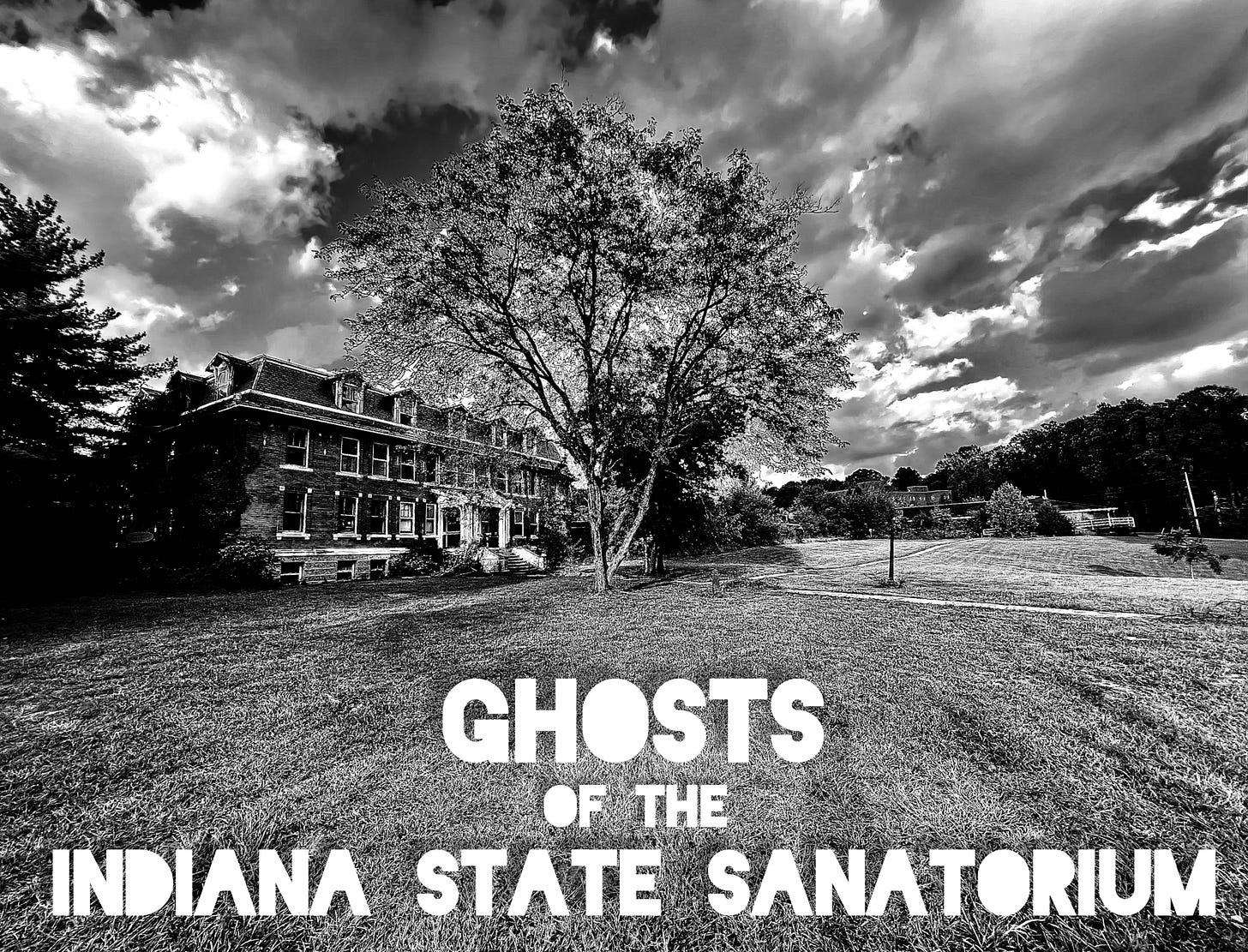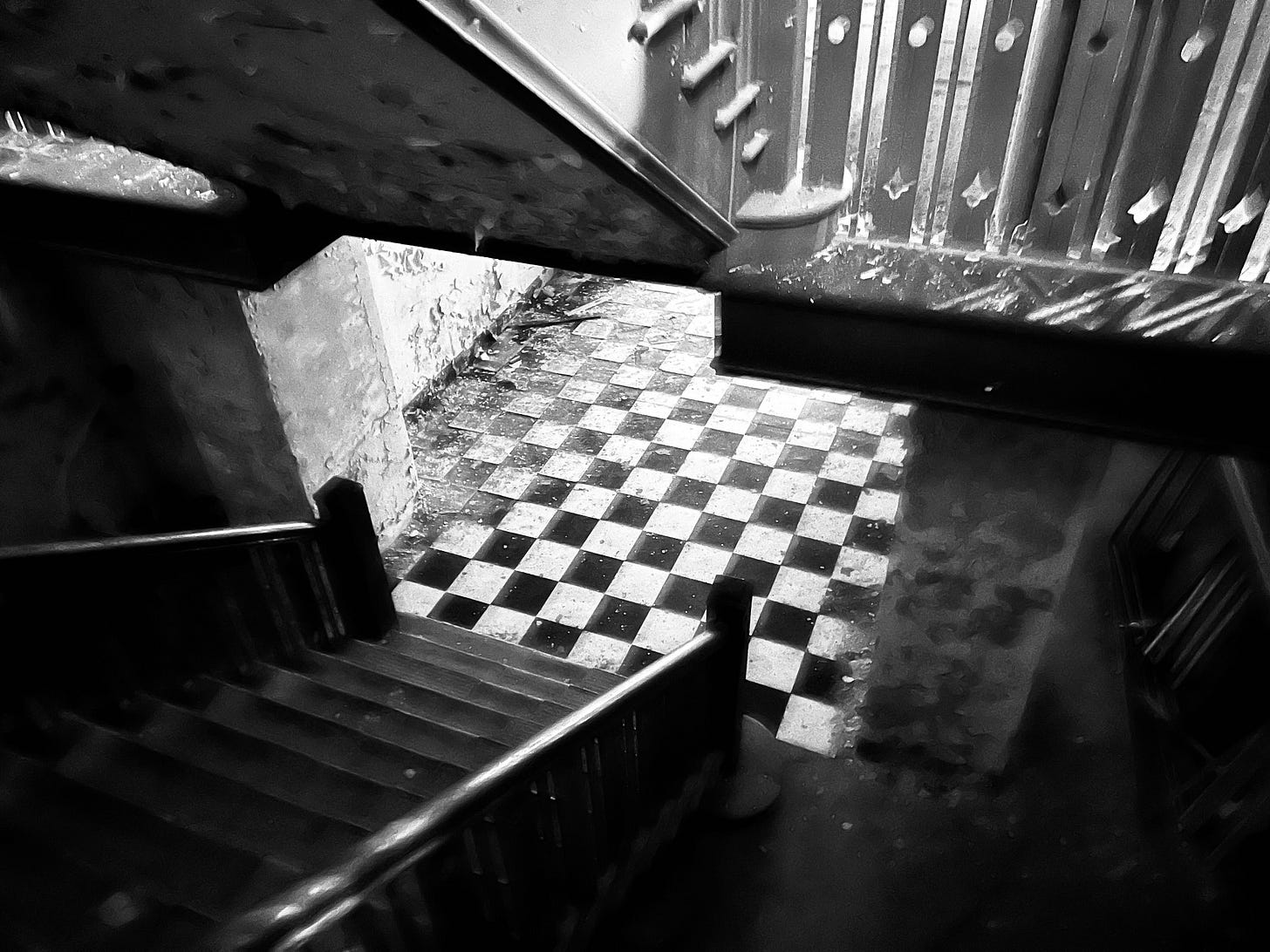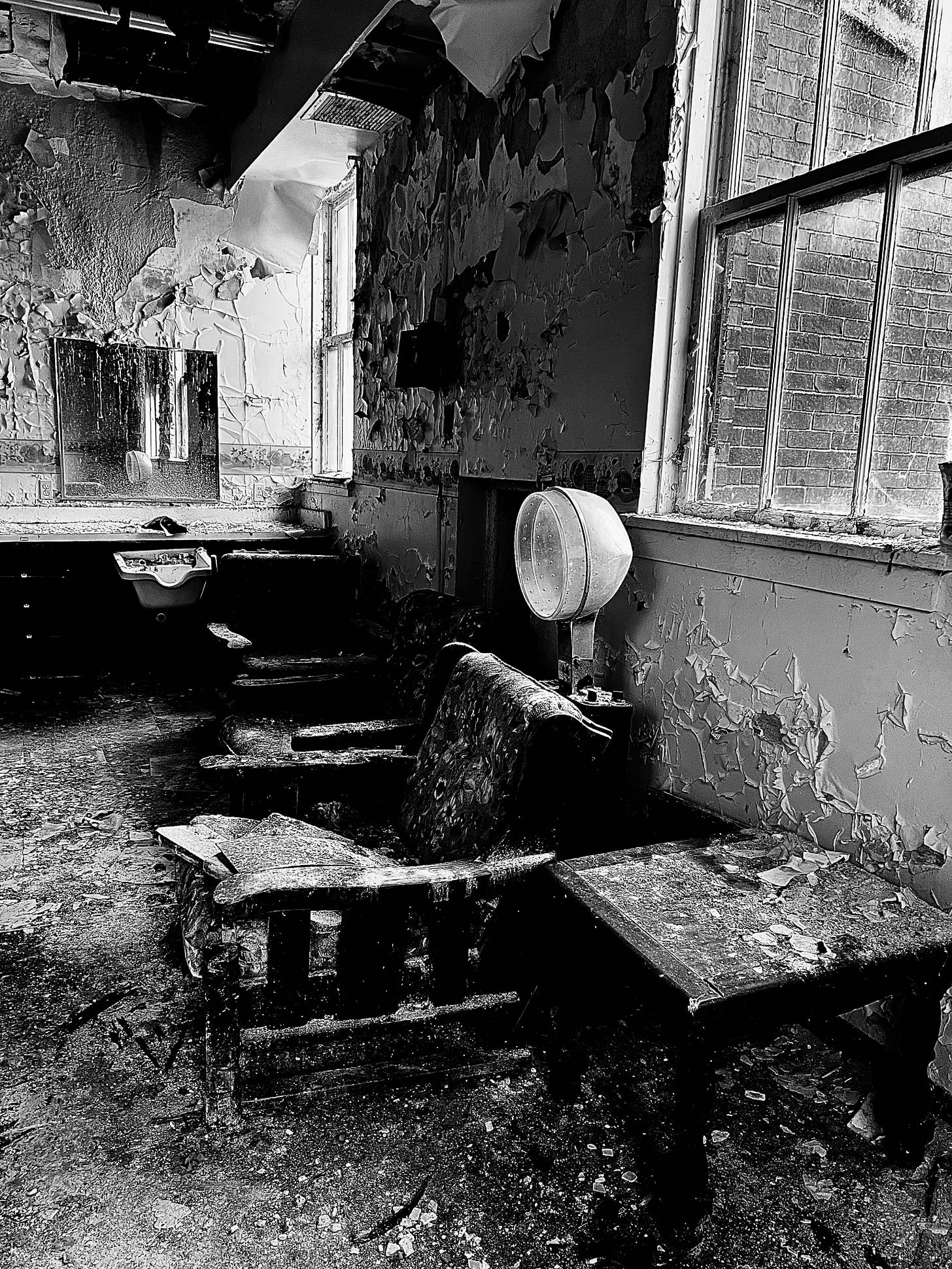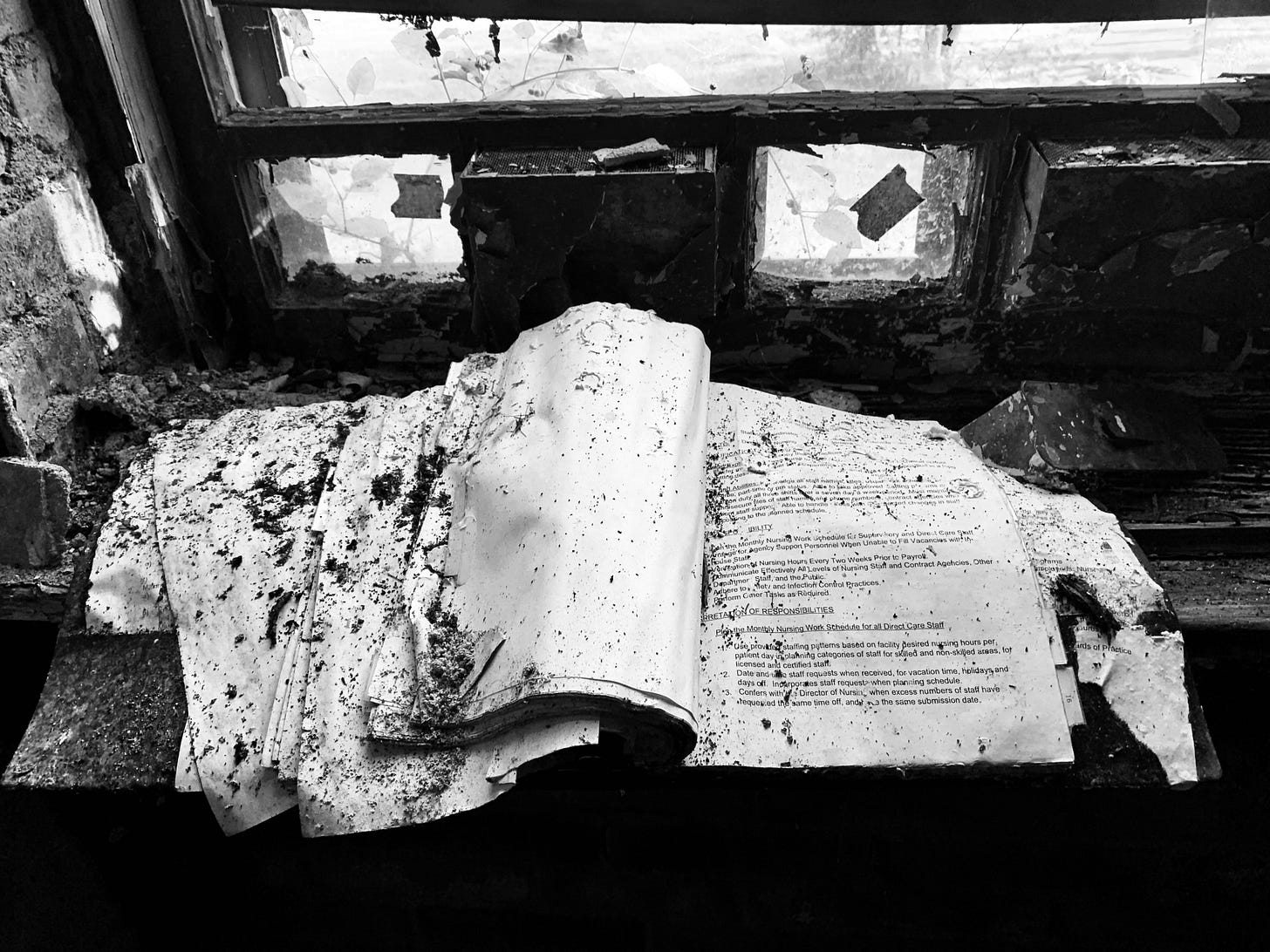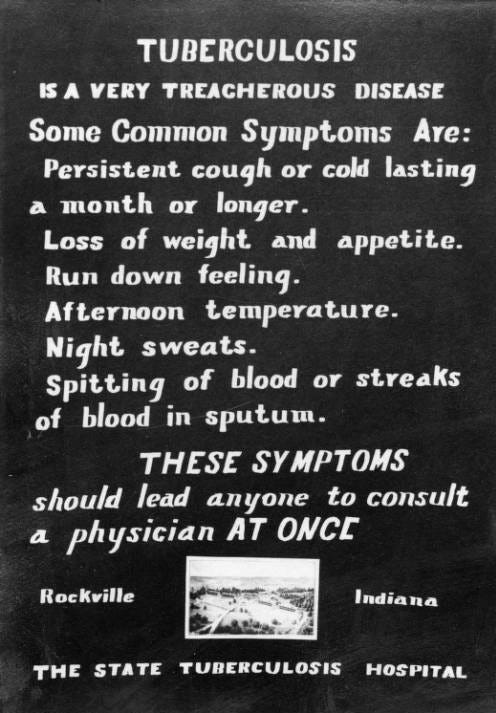Ghosts of The Indiana State Sanatorium: Two Visits to One Haunting Legacy
A Paranormal Investigator’s Journey into Indiana’s Haunted Past
Stepping onto the grounds of the Indiana State Sanatorium (ISS) for the first time on September 18, 2022, was nothing short of overwhelming. This place is massive. I’ve visited plenty of large, haunted locations, but this one stands in a league of its own. Its sheer size instantly made me question if one night would ever be enough to truly grasp the depth of this former medical facility. Spoiler alert: it wasn’t. But that feeling of being in over my head didn’t stop me from diving in. From the very beginning, I knew I’d be coming back for a deeper paranormal investigation.
The Indiana State Sanatorium—formerly the Indiana State Tuberculosis Hospital, later a nursing home, and eventually a psychiatric facility—holds layers upon layers of history within its walls. Each room, hallway, and floor seemed to echo with stories of its past lives. Naturally, I wondered how hauntings might vary between different parts of the building. Would a ghost in the psychiatric wing communicate differently than one from the nursing home? Do spirits from different eras and purposes interact, or are they trapped in the time periods they once inhabited? These thoughts swirled around me as I explored the dark, empty corridors of this extraordinary haunted location.
While a few other investigators, including ol’ Mike Culwell, and I captured some EVPs (Electronic Voice Phenomena) on that first visit, none of them reached the clarity of a Class A EVP. Honestly, that’s almost an impossibility—especially when using the controversial Panasonic RR-DR60 recorder, notorious for producing anomalous sounds that some swear by and others debunk. Still, the EVPs we caught, though faint and often unclear, hinted at something more. It was during that initial visit that we believed we received messages about a spirit named Mary—a discovery that would become the foundation for our return.
From the beginning, I made a deliberate choice not to rely heavily on ITC (Instrumental Trans-Communication) devices during this paranormal investigation. I’ve been refining my methods and protocols for a while now, especially when investigating sites steeped in history. The goal is to avoid false positives and only rely on tools when necessary. For example, if I can’t capture a near Class A EVP in the environment itself, I hesitate to introduce other types of ITC devices that might pick up stray signals (ghost box, app, etc..), which could be misconstrued as paranormal communication. It’s a strategy meant to keep myself grounded in what we’re actually experiencing in the location versus being caught up in the instant gratification of perceived responses.
Though the first visit didn’t yield a perfect EVP, it did produce a few that fit the atmosphere of the sanatorium—which is palpable with potential. That reconnaissance mission left me intrigued, curious, and determined to return.
The Search for Mary: An Emotional Return to Indiana’s Most Haunted Sanatorium
Several months later, on February 12, 2023, I found myself back at the Indiana State Sanatorium, this time with a mission and a clearer sense of purpose. I wasn’t alone, either. I was joined by my good friend and fellow investigator, Mike Culwell, as well as Colin Bonnell and Bridget Howell from Paranormal Cases. But this wasn’t just a typical ghost hunt. For Mike, it was personal.
During our first visit, Mike had an unexpected and emotional encounter with a spirit named Mary—or at least, that’s what the faint EVP suggested. We had been exploring the nursing home section of the sanatorium, an area that carries a heavy sense of sadness and abandonment, where time itself seems to stretch and warp. It was here that Mary made her presence known. In that session, she expressed frustration—almost like a cry for help from the other side—and mentioned Room 120. While we don’t have solid historical proof that a woman named Mary lived, died, or even haunted that room, the nature of the sanatorium’s history suggests that it’s possible. With thousands of patients passing through its doors over the years, it’s not hard to believe that one of them could have been named Mary.
What really struck Mike, though, wasn’t just the name or the room number—it was the feeling of unrest that seemed to cling to her presence. You can’t help but feel something when you connect with a spirit like that, whether they’re communicating from the other side or they’re a projection of something deeper within our own psyche. Mike left that first visit genuinely concerned for Mary, and it was her elusive presence that prompted him to return with the hope of reconnecting and possibly offering her peace.
The Reality of Paranormal Investigations: A Skeptical Take
So, is the Indiana State Sanatorium haunted? In my gut, I believe it is. But proving that scientifically? That’s where things get tricky—and laughable, especially when you look at how most paranormal investigations are presented today. The idea of applying the scientific method—hypothesis, theory, observation, and fact—to ghost hunting is almost absurd, particularly when you consider what passes for “research” on YouTube and in most ghost-hunting groups.
Most paranormal teams, or para-influencers—you know who I mean, the YouTubers and TikTokers—follow a formula: spooky thumbnails, catchy clickbait titles like I Stared Into Satan’s Butthole, dramatized reactions, and a lot of pseudo-scientific and demonic buzzwords to make viewers feel like something profound is happening. Don’t get me wrong—there’s entertainment value in it, and I watch some of these shows myself—but it’s a far cry from any real attempt to prove the paranormal.
For me, ghost hunting is not about making disingenuous claims or chasing down the supernatural for bragging rights and views. It’s about understanding—or at least, trying to. It’s about empathy—for both the living and the potential of the after-living. It’s about those human connections we stumble upon in the strangest places. Mike’s search for Mary wasn’t just a ghost hunt; it was an attempt to help, to offer some kind of peace to a spirit that may or may not have been trapped between worlds.
As paranormal investigators, we’re emotional archaeologists, sifting through layers of time and memory to make sense of these experiences. We dig into the unknown, not just to document eerie moments but to explore deeper existential questions about life, death, and what might lie beyond.
On this second visit, we spent hours in the nursing home wing, calling out for Mary, trying to pick up where we left off. The air was thick with heavy anticipation. In moments like these, you start questioning everything. Does she remember us? Does she want to be found? Was she even real? We waited, we listened, but as is often the case in this field, the answers were elusive. Haunting is a tricky business, after all.
A Haunting Legacy at Indiana’s Most Haunted Location
In the end, we didn’t leave the sanatorium with all the answers. But we did leave with more questions—and sometimes, that’s enough. The Indiana State Sanatorium is haunted—of that, I’m certain. But whether the spirits are truly stuck here or are simply echoes of the past is a mystery we’ll continue to chase.
As I reflect on my experiences at the Indiana State Sanatorium, one thing is clear: this place is eerily reminiscent of every similar location I’ve ever explored. Its vast corridors hold countless stories—some lost to time, others still hanging in the air, waiting to be told. Whether you believe in ghosts or not, the experience of investigating a haunted location like this leaves a mark on you. And that, in itself, is haunting enough.
So, once again, throw on your headphones, sit back, and enjoy our journey through this labyrinth of history and mystery. Whether it’s science or spirit influencing us—or if this is just me staring into Satan’s butthole—that’s for you to decide. Nevertheless, the truth is still out there, waiting in the dark halls of the Indiana State Sanatorium.
Cheers once more,
— Evel Ogilville
P.S. What do you think—Was Mary reaching out for help, or was it something else entirely? Share your thoughts, and stay tuned for more explorations into the unknown.
Videos:
Part One:
Part Two:
Historic Timeline:
Indiana State Sanatorium
3838 East Old 36 Road, Rockville, IN
Originally Indiana State Tuberculosis Hospital (Old Indiana State Chest Disease Sanatorium) constructed in 1909-10 after state approved purchase of 504-acre property east of nearby Rockville for institution for treatment of the disease. Opened to patients in 1911, quickly exceeding capacity.
During construction, site known as Camp Trudeau after New York physician who established the first laboratory for study of the tuberculosis. Hospital grounds eventually included men’s, women’s and children’s wards, administration building, staff housing, farm and dairy, school, greenhouse and tunnel system. In 1913, State Sanatorium Covered Bridge built to transport coal across Little Raccoon Creek.
Became known as Indiana State Sanatorium (also later as Parke County Sanitarium) in 1919.
Adams Hall staff residence constructed in 1950s with later conversion to psychiatric hospital after development of successful tuberculosis treatment and decline in patients precipitated repurposing of facility.
After conversion to mental health facility, facility closed in 1968-9 and land and buildings sold by state. Later reopened in 1978-80 as privately owned assisted living facility Lee Alan Bryant Health Care Center. State also transferred patients from other mental institutions, resulting in mixed mental health/nursing home patient/resident population.
A history of more than 4,000 deaths and many tragedies as the health care center were said to have contributed to the poor reputation/decline of the facility – including many allegations of resident abuse and deaths. In 2002, a woman found outside dead of hypothermia, and months later a man hanged himself less than quarter-mile away. Residents again wandered away and died in separate 2006 incidents, one struck by a car and the other found in creek; 2009 murder-suicide of two employees.
Facility closed in 2011 after loss of funding. Property abandoned. Purchased in 2020 by Gregg Larson, founder of the Sanatorium Project property restoration effort.
Today’s Indiana State Sanatorium rests on over 200 acres, and offers complete access to more than 120,000 square feet of the historic tuberculosis hospital, a nursing home, a mental hospital, and supporting buildings, including thousands of feet of steam tunnels, and is available for tours and paranormal investigations.



